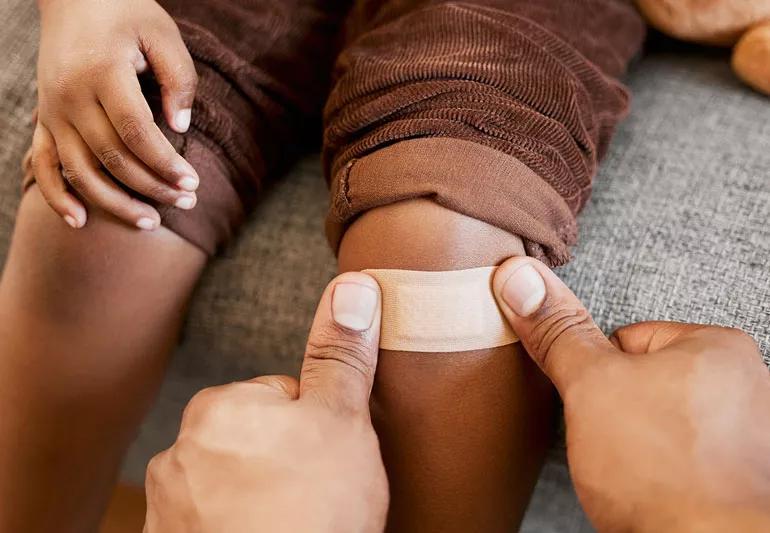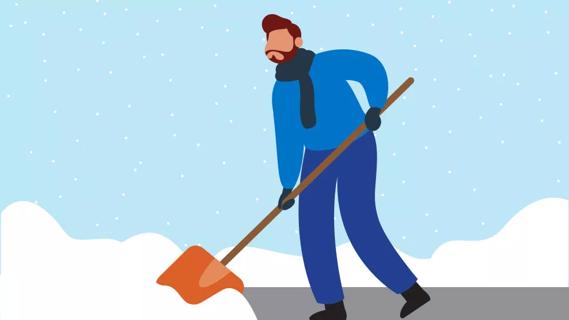If the area is bleeding a lot or it’s near your face or genitalia, it may be time to head to the ER

It’s tricky to tell whether a cut or scrape needs a doctor’s attention.
Advertisement
Cleveland Clinic is a non-profit academic medical center. Advertising on our site helps support our mission. We do not endorse non-Cleveland Clinic products or services. Policy
Everyone gets skinned knees, small cuts, puncture wounds or animal scratches occasionally. And many minor lacerations heal without medical intervention. But some injuries require stitches or other types of treatment to ensure proper healing.
Whether it’s a child or adult who has the cut, it may warrant a visit to an emergency department. But how do you tell?
“It can sometimes be difficult to tell if an injury will require stitches or not,” says pediatric emergency medicine physician Purva Grover, MD. “It’s really a judgment call and a challenge for a parent to ascertain the difference.”
And it can be especially scary and worrisome for parents and caregivers to deal with cuts and puncture wounds on their kids. If you’re unsure if your child needs a trip to the ER and possibly needs stitches, it’s better to seek immediate medical attention.
So, when does a cut need stitches? Dr. Grover and emergency physician Baruch Fertel, MD, offer some guidance on when to visit an ER for a cut and what to expect if you get stitches.
“Certain lacerations and wounds almost always require a visit to the ER or urgent care center,” says Dr. Fertel.
Both doctors advise heading to an ER for evaluation if the wound is:
Advertisement
If you decide to go to the ER or urgent care center, here’s what you need to know about how to care for the cut until you receive medical attention:
Don’t remove any foreign object — like a piece of wood or metal — stuck in the wound, says Dr. Fertel.
“You don’t know what the foreign object has struck underneath,” he says. “More than once, I’ve seen cases where the object has struck an artery and is blocking the bleeding. The moment you pull it out, there’s no longer anything there to block the arterial blood flow and this can cause devastating consequences.”
If an animal or human has bitten you, a family member or friend and the laceration is more than a very superficial abrasion — or a contaminated or rusty object caused the injury — seek medical attention immediately.
For adults, if you haven’t had a tetanus booster shot within the past 10 years, you’ll need one now.
Most children have had tetanus vaccinations, but these types of injuries require medical evaluation anyway. The attending physician may prescribe oral antibiotics as well.
If possible, gently clean the injured area before visiting the emergency department by thoroughly irrigating it.
Dr. Fertel suggests using tap water and a dilute liquid antibacterial soap to do this. This is a good way to clean off almost any wound.
He says hydrogen peroxide doesn’t work well for wound cleaning. It damages the tissue.
“One of the best things parents can do before bringing their injured child to the ER is clean the wound, but only if they have the time and expertise to do so,” he adds.
Dr. Grover advises parents to avoid giving an injured child anything to eat or drink before going to the ER.
“If they have eaten something recently and start getting very upset, they might vomit, further escalating the stressful situation,” she explains. “Also, in the rare occasion they might need any sedative or anxiety medications, it’s advisable to avoid a heavy meal.”
Advertisement
On the way to the hospital or clinic, apply direct pressure and elevate the injured area.
This will usually help slow or stop most bleeding. Most of all, remain calm and drive safely. You wouldn’t want to complicate the situation by getting stopped for speeding or, even worse, an accident.
If your cut or scrape is very minor — not deep or contaminated — treat it at home by irrigating it as suggested above, and then dress it with a topical antibiotic and a bandage.
Both doctors recommend keeping the area clean and reapplying antibiotic ointment and a bandage several times a day when caring for a minor cut at home.
Keep a close eye on your wound to monitor healing. If you become concerned, visit a healthcare provider right away.
If your provider determines that you need stitches, a suture or string will be used to bring the cut or wound together.
As a sharp needle is used, you may be given a numbing medication or local anesthetic to help with pain.
It’s important that you properly care for the stitches once you return home. Your care team will provide more information, but basic care includes:
Advertisement
“Depending on the location and kind of suture material used, your physician will advise you when to get them removed,” says Dr. Grover.
Advertisement
Learn more about our editorial process.
Advertisement

Bleeding is a risk and warrants taking care, but the reward of this lifesaving medication is great

Severe and debilitating headaches can affect the quality of your child’s life

With repeat injections over time, you may be able to slow the development of new wrinkles

Although it can be alarming, it’s normal to experience blood clots during menstruation

Stretch before heading outside, keep proper form and avoid jerking or twisting to throw snow

Type 2 diabetes isn’t inevitable with these dietary changes

Applying a hot or cold compress can help with pain